June 19, 2024
- Sarah
- Jun 20, 2024
- 3 min read
White wild indigo (Baptisia alba) is one of my favorite prairie flowers. Its bright white flowers spike from a tall, graceful stem in a unique shade of deep purple. Depending on the lighting and time of year, the leaves have beautiful hues of blue and gray. After the first frost, the bushy plant breaks from the ground and tumbles across the prairie in the wind to spread its seeds.
Bumblebees are adept at opening the white wild indigos petals, which close quickly after the bumblebees depart to move on to the next flower.
Common milkweed (Asclepias syriaca) is blooming, and the leaves are often home to a couple of milkweed beetles and monarch butterfly caterpillars. These flowers remind me of fireworks.



A bright patch of orange butterfly weed (Asclepias tuberosa) attracts butterflies and hummingbirds. Like the common milkweed of the same genus, butterfly weed also acts as a larval host for monarch butterflies. The contrast between the closed reddish flowers and brighter orange opened petals is striking, and this is currently the only orange flower blooming in the prairie.





Pale purple coneflower (Echinacea pallida) is thriving in this dry prairie.

You can see the different stages of flower development, along with the dried remnants of last year's flowers.
As I moved closer to this flower, I noticed a spider creeping around the stem to avoid me. The spider's web is nestled beneath the petals of the pale purple coneflower, which seems like a lovely summer home. On the right, the spider's dark form can be seen nestled at the top of the stem.
The very unusual dodder vine (Cuscuta) is an ectoparasite that reminds me of an aerosol string Halloween decoration. Since the dodder vine hardly photosynthesizes, it lacks enough chlorophyll to appear green, and its leaves are reduced to tiny scales. The vine wraps around the host plant, inserts haustoria into its vascular system, and its root dies while it continues grow, disconnected from the ground.



I was sad to have missed the lupine (Lupinus perennis) blooming while I was away, but these twisted seed pods were still interesting to observe.

Hoary vervain (Verbena stricta) is a short-lived perennial with beautiful lavendar flowers. It is a host plant for the common buckeye butterfly (Junonia coenia).


Prairie cinquefoil (Drymocallis arguta) has subtle blooms in a creamy color with green contrasting sepals in the shape of a star. The yellow stamens are clustered in a ring around the central pistils. Prairie cinquefoil is in the rose family.


A brief rain shower cooled off the prairie before our walk, leaving drops of water on the leaves of this quaking aspen (Populus tremuloides). While it is native to Wisconsin, aspen is not a desirable species in prairies because it spreads rapidly through its roots, forming large clonal groves that overtake the shorter prairie plants.

I was excited to see that the leadplant (Amorpha canescens) flowers were beginning to develop more color. At this early stage, the pale pink flower matches the stems, pairing nicely with its silvery, feathery leaves.

As we walked out of the prairie, we happened to pass one leadplant beginning to develop its orange stamens, which burst from deep purple petals. Leadplant becomes woody as it ages, and it is tolernat of droughts and dry soils. I think it is one of the most stunning and unique prairie plants.


Prairie coreopsis (Coreopsis palmata) grows to a maximum height of about 2 feet and is tolerant of dry soils. It is a valuable plant for pollinators and blooms for around two weeks.

The tangled violet stems of the closed flowers of Ohio spiderwort (Tradescantia ohiensis) appear to be ready for a good night's rest. Some of the violet flowers will open again in the morning sunlight.

Compass plant (Silphium laciniatum) has begun to send its yellow flowers high above the surrounding plants on hairy stalks.


Rosin weed (Silphium integrifolium) produces resinous sap that can be used similarly to chewing gum.


Thimbleweed (Anemone virginiana) develops very fluffy seedheads, which I look forward to feeling in the fall.


Round-headed bush clover (Lespedeza capitata) is a host for multiple species of skipper butterflies. It is very high in protein, making it an attractive meal for mammals like deer and groundhogs.

I had not visited this particular patch of prairie since last fall, and I could hardly take more than a few steps without stopping to look at a new plant. I plan to be back very soon to keep an eye on the leadplant and avoid missing the height of its dramatic display.

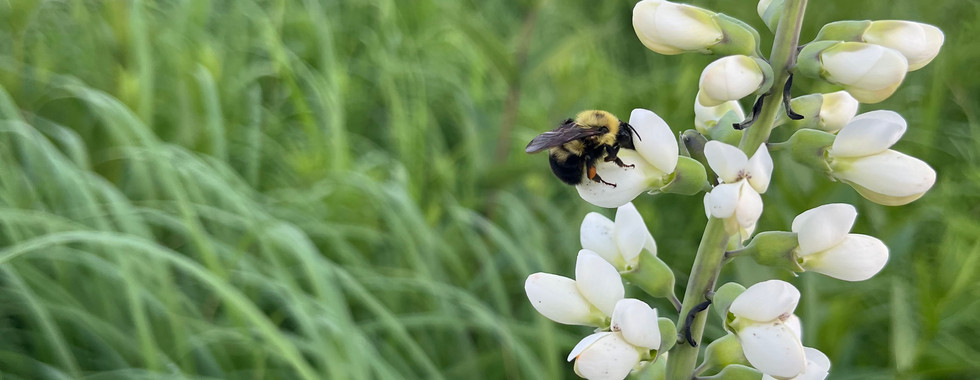



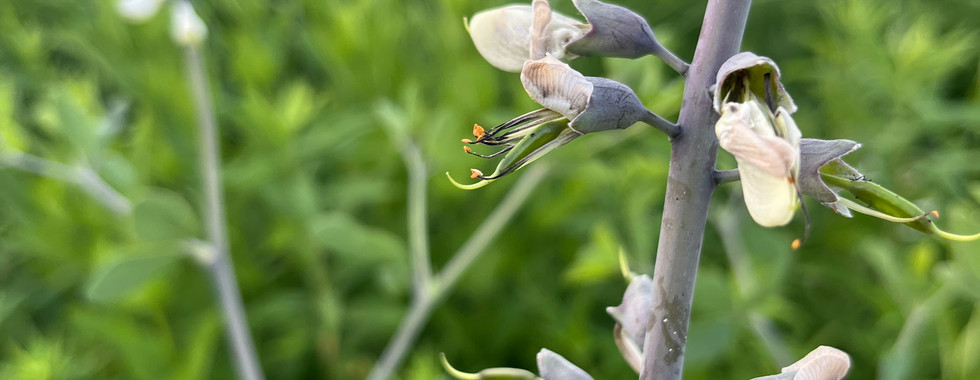

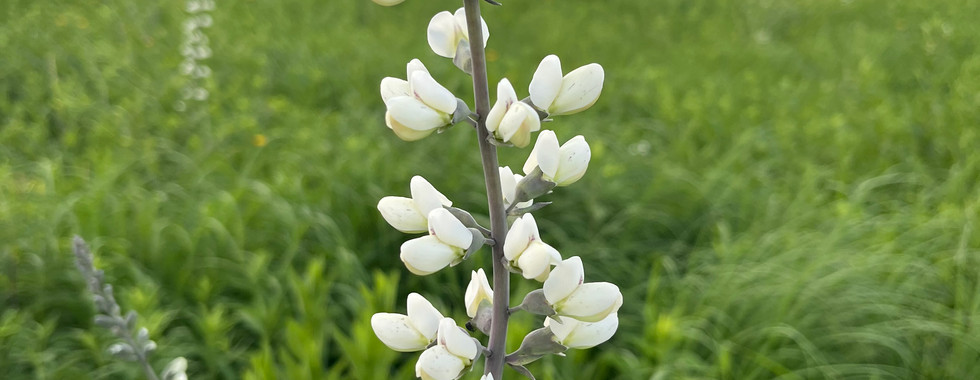
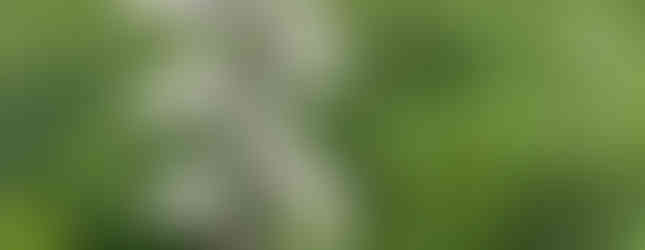


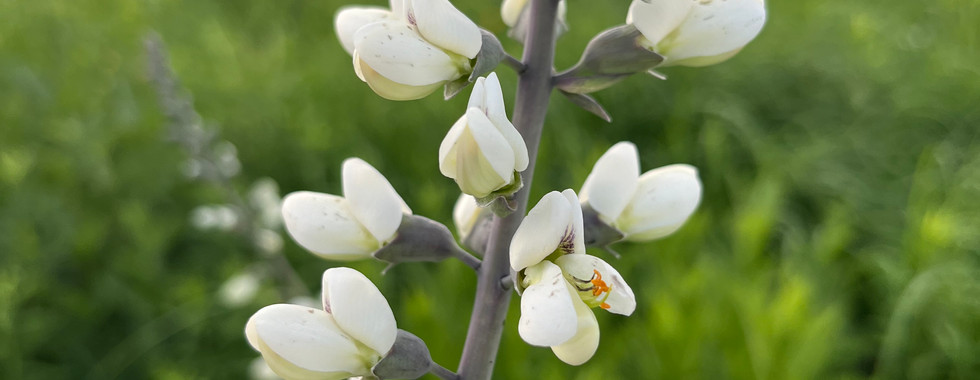

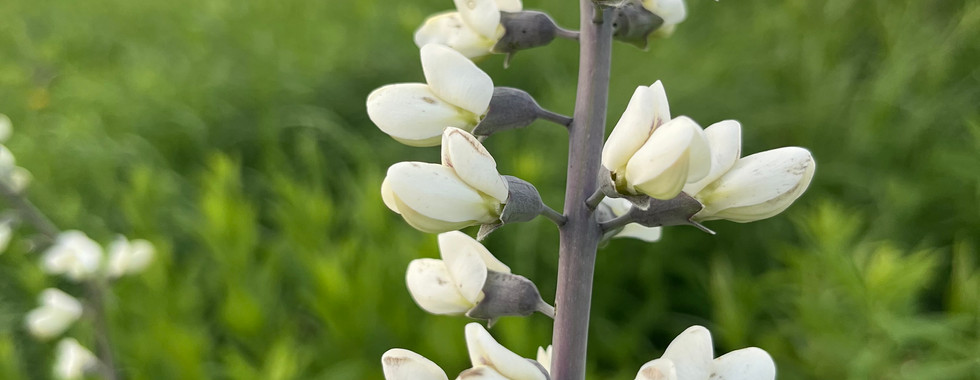



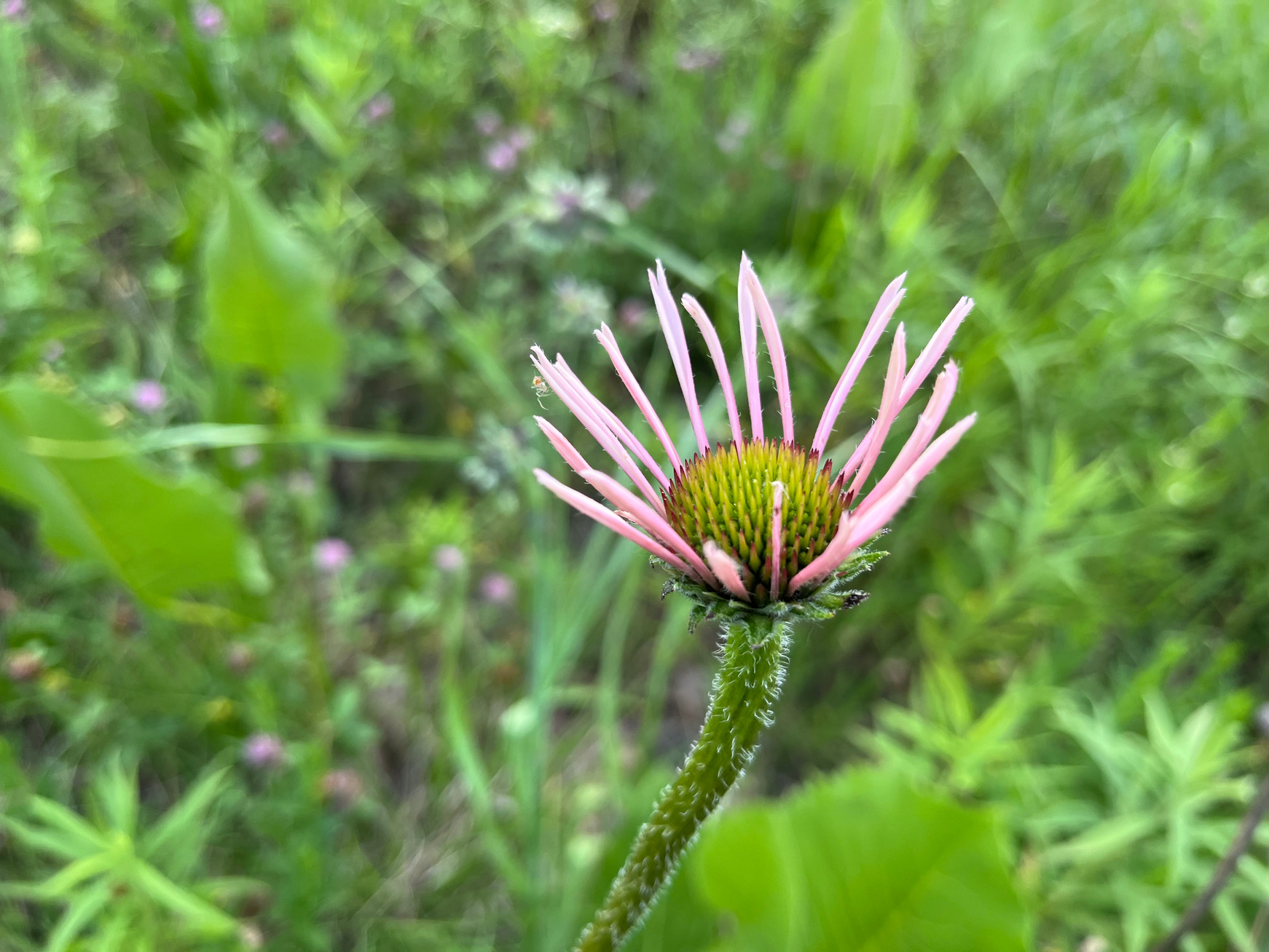
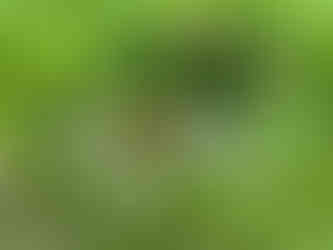


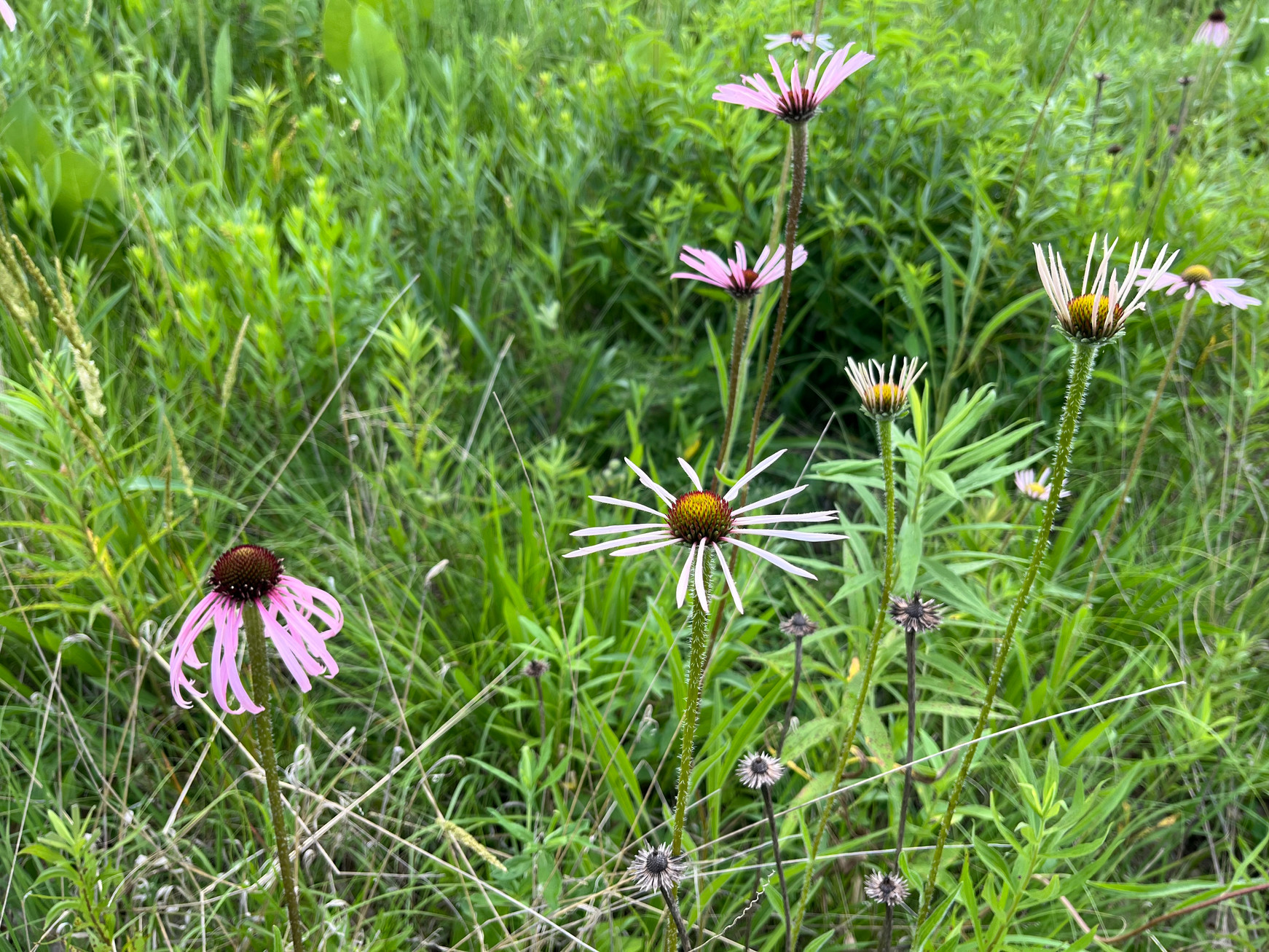
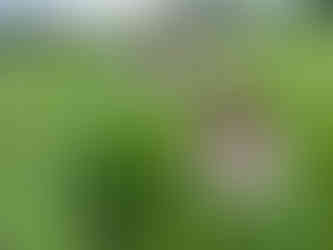


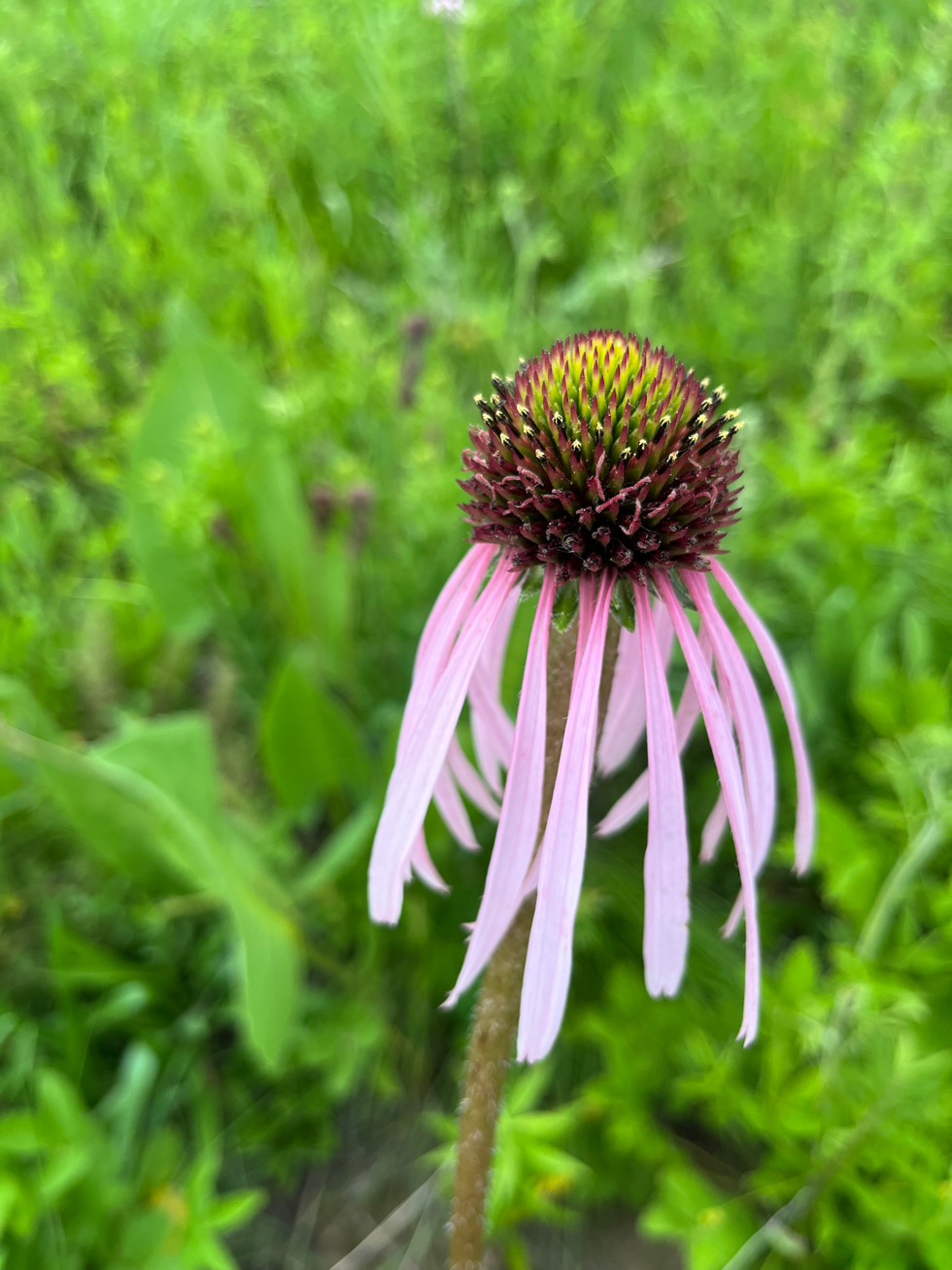







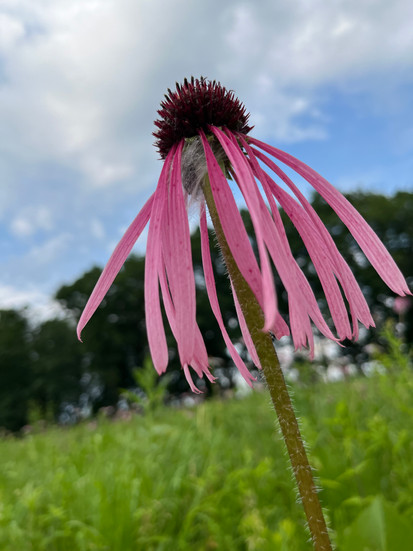



Comments